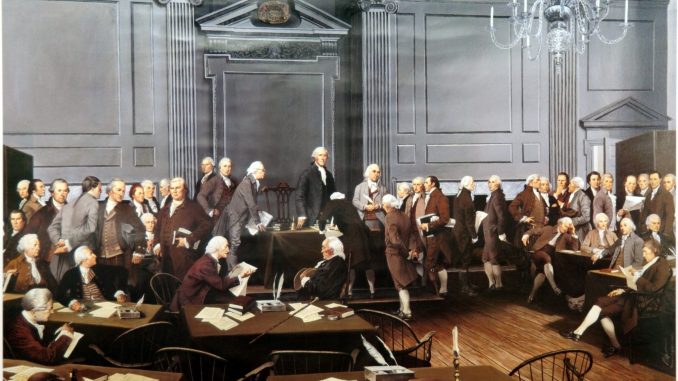
On this day, August 2nd, in 1776, members of Congress affix their signatures to an enlarged copy of the Declaration of Independence.
Fifty-six congressional delegates in total signed the document, including some who were not present at the vote approving the declaration. The delegates signed by state from North to South, beginning with Josiah Bartlett of New Hampshireand ending with George Walton of Georgia. John Dickinson of Pennsylvania and James Duane, Robert Livingston and John Jay of New York refused to sign. Carter Braxton of Virginia; Robert Morris of Pennsylvania; George Reed of Delaware; and Edward Rutledge of South Carolina opposed the document but signed in order to give the impression of a unanimous Congress. Five delegates were absent: Generals George Washington, John Sullivan, James Clinton and Christopher Gadsden and Virginia Governor Patrick Henry.
Exactly one month before the signing of the document, Congress had accepted a resolution put forward by Richard Henry Lee that stated “Resolved: That these United Colonies are, and of right ought to be, free and independent States, that they are absolved from all allegiance to the British Crown, and that all political connection between them and the State of Great Britain is, and ought to be, totally dissolved.”
Congress adopted the more poetic Declaration of Independence, drafted by Thomas Jefferson, two days later, on July 4. The president of Congress, John Hancock, and its secretary, Charles Thompson, immediately signed the handwritten draft, which was dispatched to nearby printers. On July 19, Congress decided to produce a handwritten copy to bear all the delegates’ signatures. Secretary Thompson’s assistant, Philadelphia Quaker and merchant Timothy Matlack, penned the draft.
News of the Declaration of Independence arrived in London eight days later, on August 10. The draft bearing the delegates’ signatures was first printed on January 18 of the following year by Baltimore printer Mary Katharine Goddard.



Be the first to comment